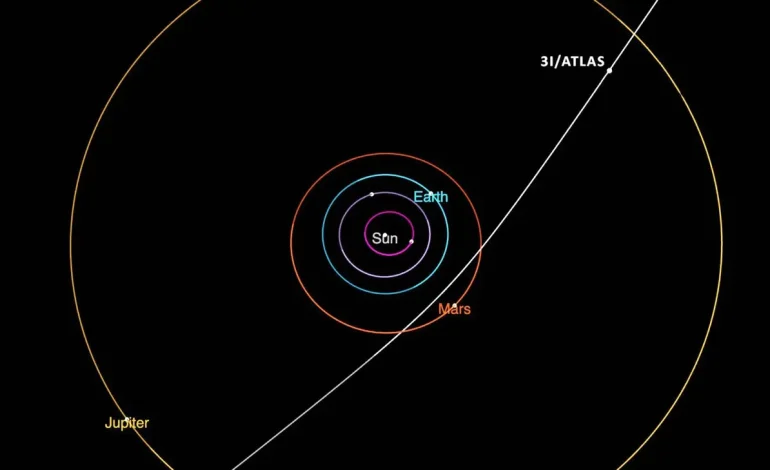Astronomers have confirmed the discovery of a rare interstellar object speeding through our solar system, Earth.com reports.
The icy visitor, now officially named 3I/Atlas, becomes only the third known interstellar object ever identified. The announcement came this week from the International Astronomical Union’s Minor Planet Center (MPC), which tracks such celestial bodies.
3I/Atlas was first spotted by a NASA-funded telescope in Chile as part of the ATLAS sky survey. Early observations showed the object traveling on a hyperbolic trajectory — meaning it is not bound by the Sun’s gravity and will eventually return to interstellar space after its brief journey near the inner solar system.
3I/Atlas displays a faint, hazy glow typical of comets. According to Peter Veres of the MPC, the object appears to be releasing gas and dust, forming a short tail and coma. Current estimates suggest a nucleus between 6 to 12 miles (10 to 20 kilometers) wide, though its true size could be smaller if the surface is highly reflective.
What distinguishes 3I/Atlas most is its exceptional speed. It is traveling at over 60 kilometers per second (135,000 miles per hour) — fast enough to escape the Sun’s gravitational pull, confirming its interstellar origin.
After the initial sighting, astronomers quickly identified the object in earlier telescope images, tracing its movement back to mid-June. All observations align with a hyperbolic orbit, evidence that 3I/Atlas entered the solar system from beyond its bounds.
NASA and ESA scientists have emphasized that the comet poses no threat to Earth, with its closest approach expected to pass just inside Mars’ orbit. It will reach its closest point to the Sun (perihelion) on October 29, before fading from view as it travels back into deep space.
Interstellar comets like 3I/Atlas originate in other solar systems. Scientists believe these icy objects are sometimes flung out by gravitational interactions with other stars and eventually drift through the galaxy. Previous examples include ʻOumuamua in 2017 and 2I/Borisov in 2019.
Unlike ʻOumuamua, which had a mysterious, cigar-like shape, 3I/Atlas resembles a more typical comet — but it is larger and faster than either of its predecessors, offering a unique opportunity for study.
Due to its speed and the short notice of its discovery, spacecraft interception isn’t feasible. Instead, scientists will rely on ground-based and space-based telescopes to collect data. Spectroscopic analysis could reveal the comet’s chemical composition, while photometric observations may determine its rotation rate and outgassing activity.
Studying interstellar objects like 3I/Atlas gives researchers a rare chance to examine material formed around other stars. Such objects can help scientists better understand the building blocks of planetary systems and the chemistry of alien environments.
According to modeling studies, thousands of similar interstellar objects may be passing through the solar system at any given time — most too small or faint to detect. Upcoming facilities like the Vera C. Rubin Observatory in Chile are expected to increase detection rates dramatically.










The latest news in your social feeds
Subscribe to our social media platforms to stay tuned